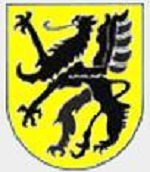Dragon DRR60368 Dragon DX '08 VIP Exclusive: German Early Production Sd. Kfz. 142 Sturmgeschutz III Ausf. G Assault Gun - Hauptmann Bodo Spranz, Sturmgeschutz-Abteilung 237, Eastern Front, 1943 (1:72 Scale)
"We must do everything we can to promote anti-tank defense, and work just as hard to guarantee successful counter-attacks through the instrument of powerful tank forces of our own."
- Major-General Heinz Guderian, "Achtung Panzer!"
 The German Sturmgeschutz (StuG) was one of the most successful armored fighting vehicles of the Second World War. It arose from an original concept of the pre-war panzer divisions, whereby a special vehicle for infantry support work was planned. During the war years, the Sturmgeschutz was rapidly developed and upgunned, and was used both in its original role as an assault gun and also as a tank destroyer.
The German Sturmgeschutz (StuG) was one of the most successful armored fighting vehicles of the Second World War. It arose from an original concept of the pre-war panzer divisions, whereby a special vehicle for infantry support work was planned. During the war years, the Sturmgeschutz was rapidly developed and upgunned, and was used both in its original role as an assault gun and also as a tank destroyer.
Pictured here is a DX '08 VIP Exclusive: a German early production Sd. Kfz. 142 Sturmgeschutz III Ausf. G assault gun that was commanded by StuG Platoon Leader Bodo Spranz, who was assigned to Sturmgeschutz-Abteilung 237, then operating on the Eastern Front during 1943.
Sold Out!
Dimensions:
Length: 3-1/2 inches
Width: 1-1/2 inches
Release Date: August 2008
 Historical Account: "The Rhineland" - The drive to the Siegfried Line was one of the final Allied phases in World War II of the Western European Campaign. This phase spans from the end of the Operation Overlord (August 25th, 1944) up to the start of the Ardennes Offensive (December 16th, 1944), and roughly corresponds to the first part of the official US European Theater of Operations Rhineland Campaign.
Historical Account: "The Rhineland" - The drive to the Siegfried Line was one of the final Allied phases in World War II of the Western European Campaign. This phase spans from the end of the Operation Overlord (August 25th, 1944) up to the start of the Ardennes Offensive (December 16th, 1944), and roughly corresponds to the first part of the official US European Theater of Operations Rhineland Campaign.
Following the Allied success in both Northwest Europe and Southern France, the Allied forces from both were united under the Supreme Allied Commander General Eisenhower and his headquarters SHAEF.
The layout of this front was to have the 21st situated to the north of the Ardennes, the 12th to the south, and the 6th (formerly Dragoon Force) protecting the 12th's southern flank.
While Generals Montgomery, Bradley and Patton all favoured relatively direct thrusts into Germany (with Montgomery and Bradley each offering to be the spearhead of such an assault), Eisenhower disagreed. Instead he favoured a "broad-front" strategy which would allow the Allies to regroup and shift their forces as needed, and to protect vital supply operations in the rear.
The rapid advance through France had caused a considerable logistical strain, made worse by the lack of any major port asides from the relatively distant Cherbourg in western France. As the campaign progressed, all the belligerents, Allied as well as German, felt the effects of the lack of suitable replacements for front-line troops.
Furthermore, there were two major defensive obstacles facing the Allies. The first was the natural barriers made by the rivers of Western France. The second was the Siegfried Line itself, which fell under the command, along with all Wehrmacht forces in the west, of Field Marshal Gerd von Rundstedt.





 Purchase.
Purchase. 
